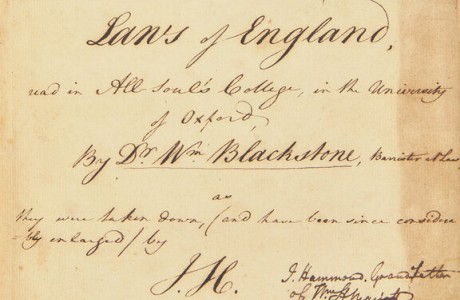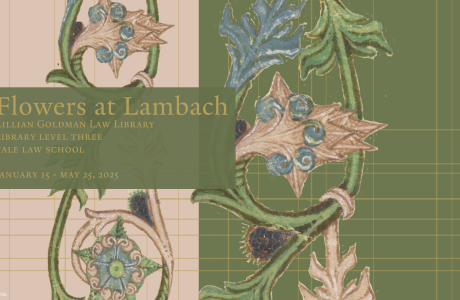Law Schools in Connecticut, 1782-1843: Yale Law School
A handful of college and college-affiliated law schools existed in the early decades of the nineteenth century. The College of William & Mary established a law department in 1790, which granted America’s first LL.B. in 1793. Others schools followed, such as Transylvania University (1799-1861), Harvard University (1817), and the University of Virginia (1826).
Although some have proposed earlier dates, it is generally agreed that the New Haven Law School was joined to Yale College in 1826. Existing records do not explain the reasons for this union, but we can point to a few possibilities. In the early nineteenth century American colleges were beginning to evolve into universities by establishing or acquiring professional schools. Elite lawyers, many of them members of college corporations, encouraged the creation of college-based law schools.
Finally, the New Haven Law School was an attractive bargain; it was a successful, self-financed, self-managed school with a fine library and a distinguished faculty. And it was available to Yale for nothing more than the prestige conferred by its name. On their part, Hitchcock and Daggett probably viewed their school’s union with their prestigious alma mater as a way to raise its profile and compete with other prestigious schools, Harvard especially.

Catalogue of the Officers and Students in Yale College (Nov. 1826). [Image cropped.] Rare Book Collection, Lillian Goldman Law Library.
Yale’s 1826 Catalogue marked the re-birth of the New Haven Law School as Yale Law School, a peer institution of the “Theological Department,” founded in 1822, and the “Medical Institution,” founded in 1813. Daggett was appointed to the Yale College faculty as “Professor of Law” in 1826, another factor that joined the two schools. He was granted an LL.D the same year. Hitchcock received a courtesy title of instructor in the college in 1830 and an LL.D in 1842.

Aholiab Johnson (1799-1893), Account book, 1825-1840. Rare Book Collection, Lillian Goldman Law Library. Gift of Lois S. Montbertrand, Law ’85.
Johnson’s account book records the cost of a year’s tuition at the New Haven Law School: “Due Hitchcock & Daggett for tuition use of Library &c from Dec. 1st 1824 to Dec. 1st 1825 - $75.00”. Johnson went on to practice law in Enfield, Connecticut for over 50 years. His obituary in the Connecticut Reports noted, “he had lived during all the lives of the presidents of the United States. He had been for a long time the oldest lawyer in the state.”

Samuel J. Hitchcock, letter to Yale Corporation requesting permission to grant LL.B., 1842 Aug. 6. Yale University Corporation Records (RU 164, Accession 1993-A-083: box 2, folder 2). Courtesy Manuscripts & Archives, Yale University Library.
Hitchcock offers two reasons why Yale should confer the LL.B.: it would enable the law school to compete with other degree-conferring schools, especially Harvard, and it would “raise the standard of attainments” and “moral conduct” of the students. His second point reflects a larger effort among elite lawyers to expand the scope of legal education beyond preparation for the bar exam, which was the sole purpose of the proprietary schools.

Yale College Law School [circular]. New Haven, 1843 Sept. 1. [Image cropped.] Yale Law School Records (RU 449, Accession 1939-A-001: box 1, folder 6). Courtesy Manuscripts & Archives, Yale University Library.
Intended for enrolled and prospective students, the 1843 circular describes requirements for the LL.B. This text was also published as an advertisement in several nationally circulated journals. The law school’s enrollments increased after 1826, but it drew even more students after it became a degree-granting institution. By 1865 it had trained students from 31 states and territories and six foreign countries.
– Notes by Michael von der Linn
“From Litchfield to Yale: Law Schools in Connecticut, 1782-1843,” curated by Michael von der Linn and Michael Widener, is on display through May 30, 2013, in the Rare Book Exhibition Gallery, Level L2, Lillian Goldman Law Library, Yale Law School.


